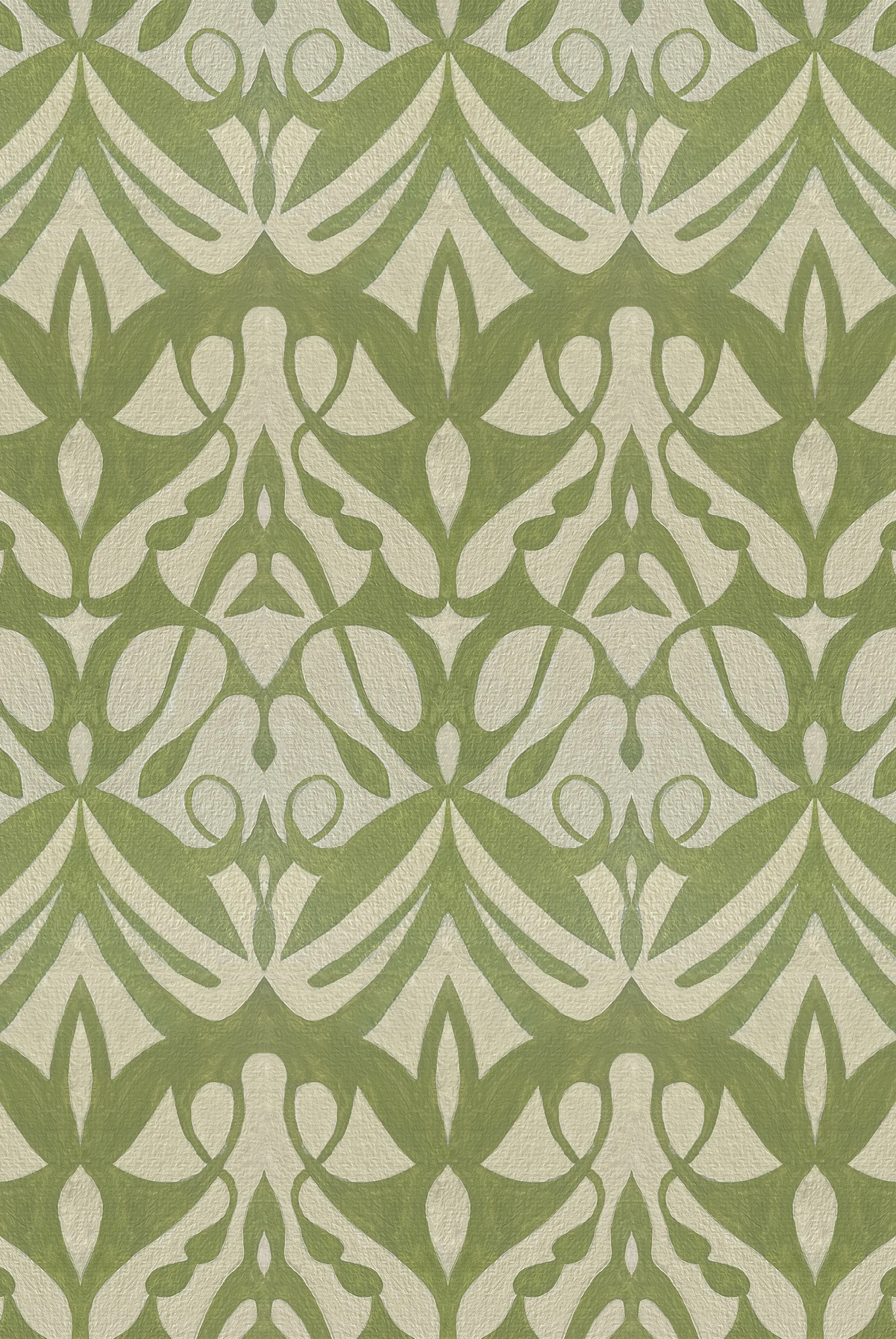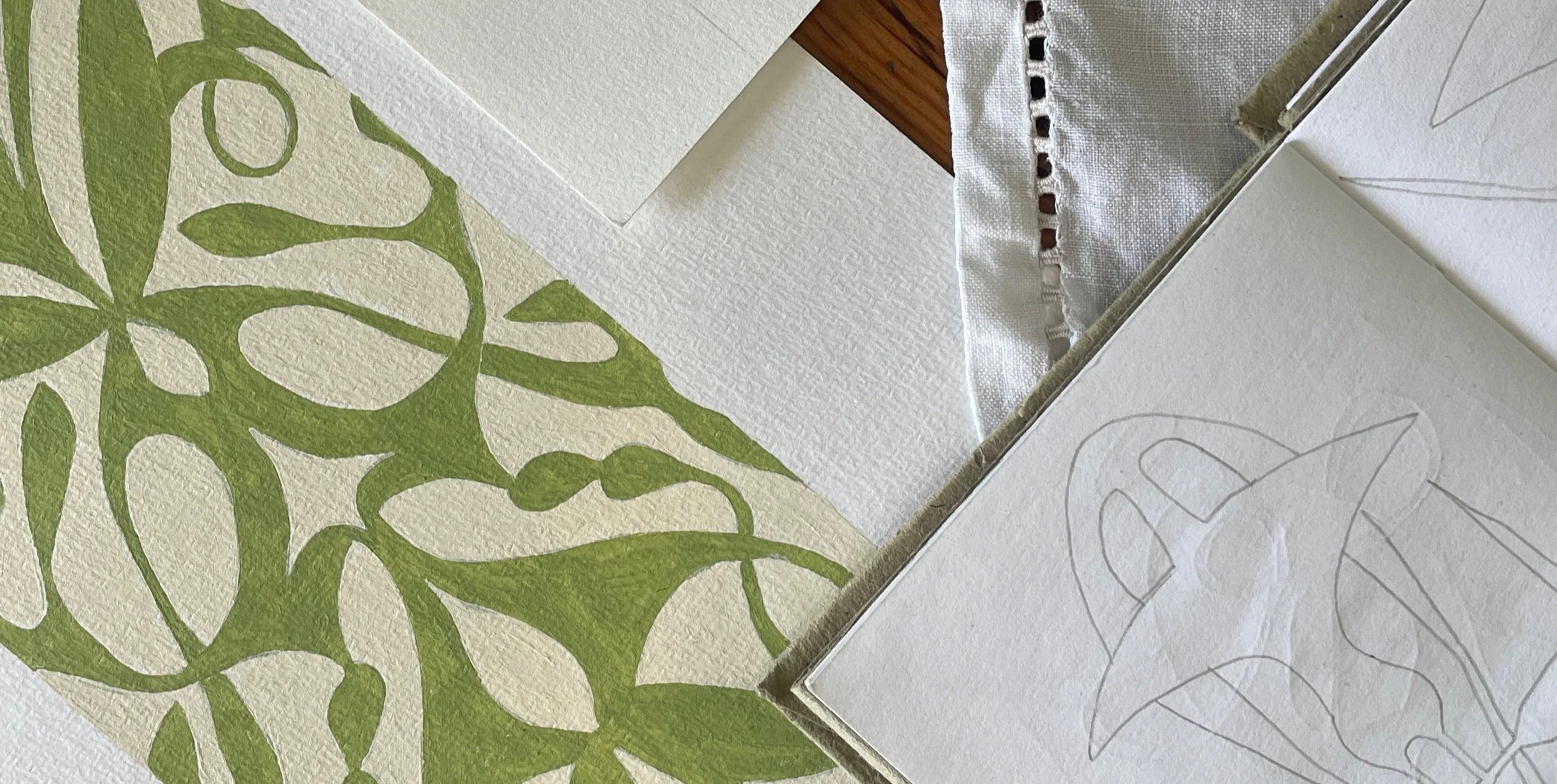oak
folktale pattern series
For the first pattern in my collection I wanted to express the cultural spirit of a tree that is rooted in the imaginations and history of the people of England, past and present.
Where there are more recognisable shapes like the possible bobbled notches of a branch, a bud or twisting plant stem, the design warps it and takes the image into a different direction as I draw. The result, I think, is something that feels at once natural, familiar yet something reminiscent of the nonphysical world, forces we cannot see but feel instead. When the pattern comes together, you can sometimes make out contorted faces between the lines and curves of the design like you can in the gnarled bark of an old oak.
In this pattern, I seek to represent the oak’s metaphysical existence as an identity shaped not solely by its biological form, but by the cultural, historical, and spiritual meanings ascribed to it by human imagination.
As some of the oldest trees in England, the oak stands as an emblem of national ecological identity; a silent watcher in our landscape for thousands of years. It’s no wonder then that folktales and legends are so closely woven into the oak’s history.
While Druids were said to worship in oak groves (as written by Roman writer Pliny, the Elder), common folk carried acorns in their pockets for good luck. The term Royal Oak recalls the story of Charles II hiding in an oak tree to escape the roundheads during the English Civil War.
Through this, I wanted to reflect the evolving inner world we project onto the humble oak—a living archive of our past, a mirror of our present, and an unknown significance to come.




